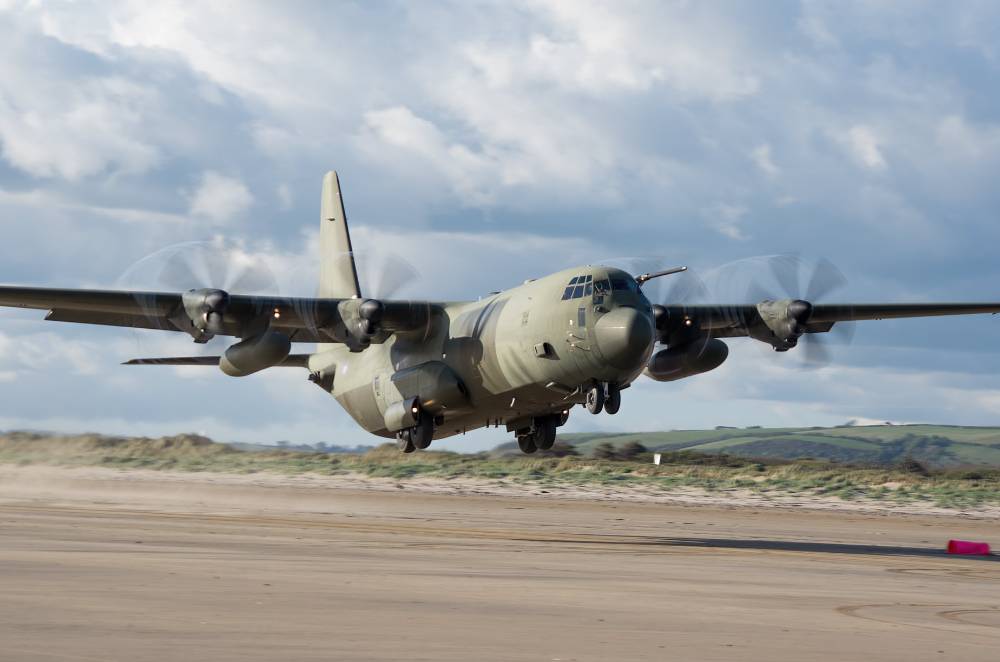
Hercules C-130J
Image courtesy of Richard Ross
No 47 Squadron was formed on 1st March 1916 at Beverley, East Yorkshire with BE2cs and Armstrong Whitworth FK3s which were joined by Bristol Scouts in June.
In September it left for Greece, arriving at Salonika on 20th September, to join a British, French and Serbian force holding an area of Macedonia, against the Bulgarian and Austro-Hungarian armies. Its initial equipment in Greece was the FK.3 and BE12.
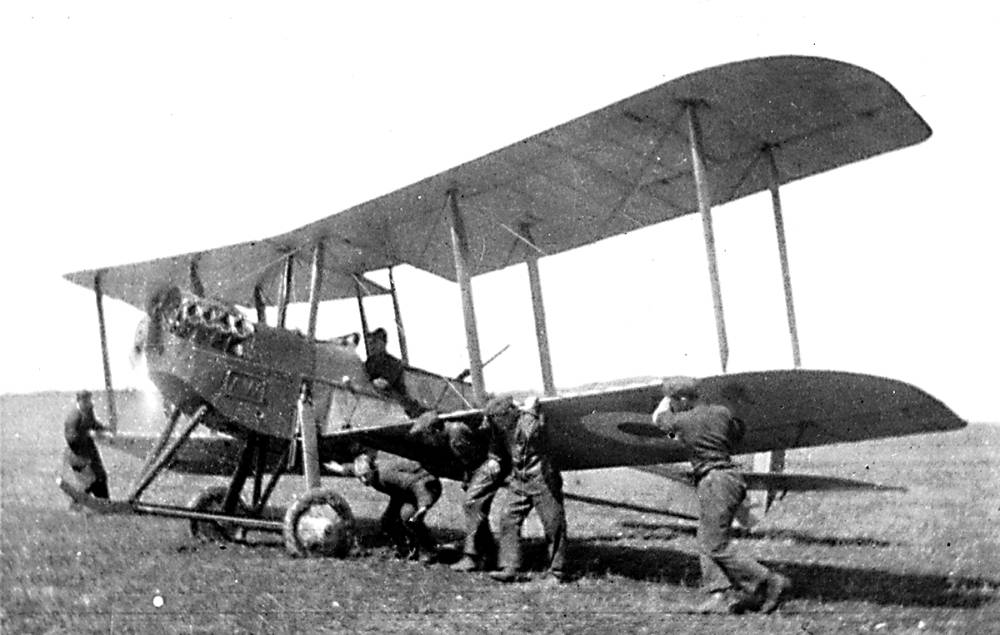
Armstrong Whitworth FK.3
Crown Copyright
Two flights operated reconnaissance aircraft and one flight fighters. The fighter flight operated the DH2 from June 1917 until April 1918 when it was transferred to 150 Sqn.
When the Bulgarian army was forced into retreat, the squadron was engaged in bombing raids on escape routes until Bulgaria signed an Armistice.
As was common in theatres other than the Western Front, the squadron used a variety of aircraft until the last months of the war. The FK3s and DH2s were joined by FB19, BE12a, BE2e, SE5a and M1c. From the early spring of 1918 most of these disparate types were replaced by FK8s which, in August, were joined by DH9s.
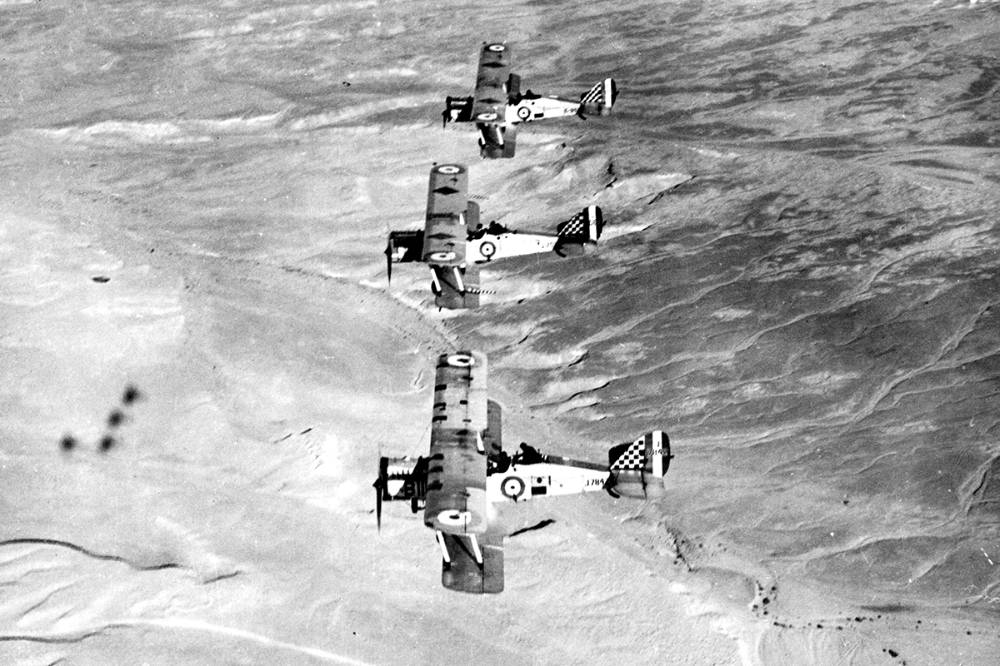
de Havilland DH.9
Crown Copyright
In April 1919 the squadron left Greece for Novorossiysk in southern Russia. Although nominally a training unit, the squadron operated in support of the White Russian Army fighting the Bolsheviks. In August and September respectively, the squadron received DH9As and Camels. On 20th October the squadron formally disbanded, being redesignated A Squadron RAF Mission. A Squadron was a “volunteer” unit and operated under its own flag, in place of the Royal Air Force ensign. This arrangement was agreed in Parliament as the best way to avoid entanglement in the ongoing Russian civil war and there followed many brave feats of aviation from 47 Squadron. Since then the Squadron has been the only RAF Squadron to have its own special flag, which has proudly flown outside No. 47 Squadron HQs. Additionally, its aircrew wear a tri-colour patch on their flying overalls.
On 1st February 1920 206 Sqn at Helwan was renumbered 47 Sqn. Equipped at first with D.H. 9s these were replaced, from June, by D.H.9As which served for the next 8 years. In 1921 it stationed a detachment at Khartoum to co-operate with ground forces in the Sudan in policing the desert areas.
In October 1927 this detachment was joined by the rest of the squadron and from December Fairey IIIFs began to replace the DH9As. In mid-1933 these were replaced by Gordons which were joined in July 1936 by Vincents.
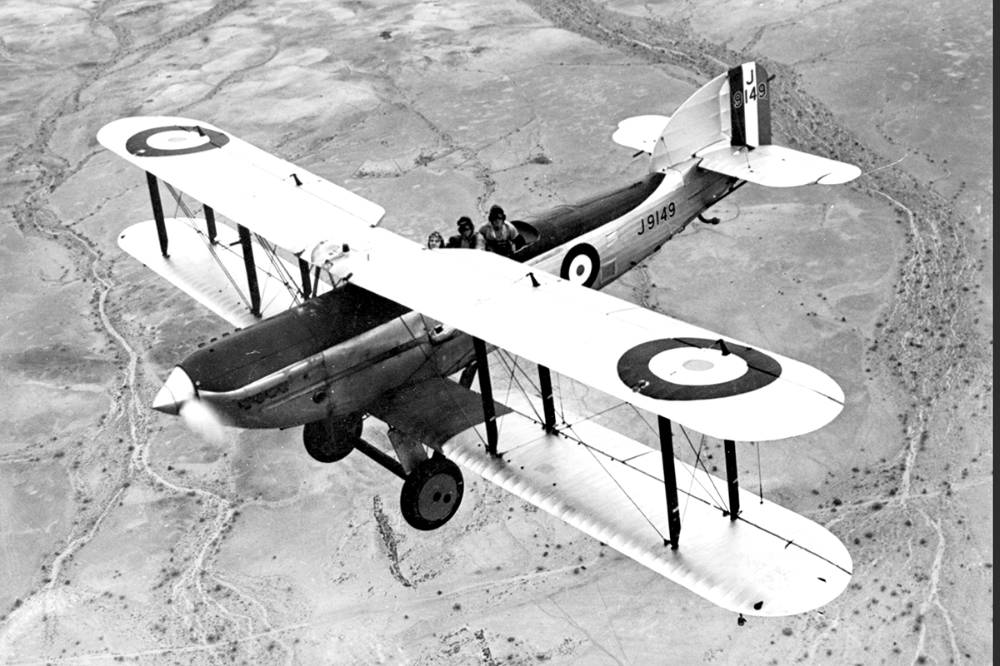
Fairey IIIF
Crown Copyright
Wellesleys arrived in June 1939 to join and eventually replace the Gordons and Vincents; with a flight of Vincents being retained for army co-operation duties until June 1940.
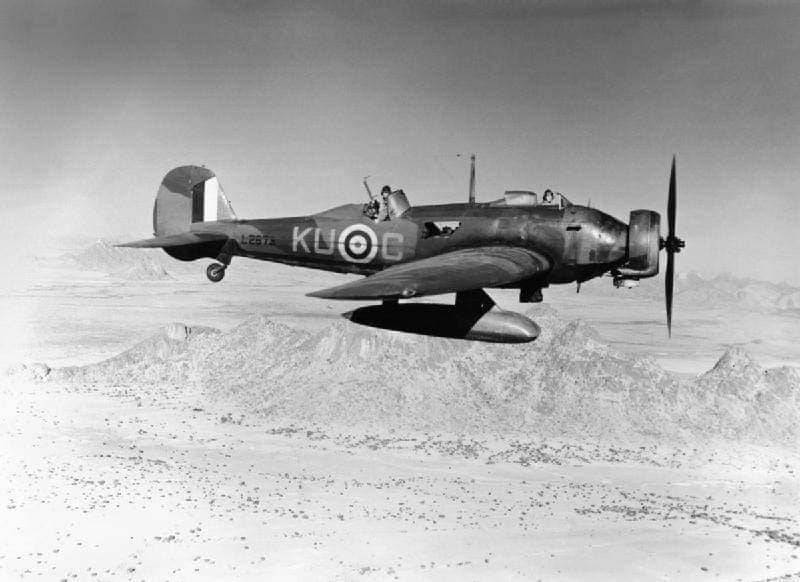
Vickers Wellesley
Crown Copyright
On the day after war came to East Africa, in June 1940, 47 Sqn, despite using obsolete aircraft, began bombing raids on Italian airfields and bases in Eritrea and Ethiopia. These continued throughout the campaign. After the Italian forces in Eritrea surrendered, the Squadron moved to Asmara. In December 1941 the squadron moved to the Middle East and, in April 1942, began anti-submarine patrols along the Egyptian coast, still flying the Wellesley.
From July until October the squadron withdrew from operations to convert to the Beaufort I torpedo-bombers, although an independent Wellesley echelon continued until disbanded on 3rd March 1943. On 8th October 1942, it flew its first anti-shipping operations with Beauforts against convoys supplying the Axis armies in Libya. In June 1943 the squadron relocated to Tunisia, at the same time re-equipping with Beaufighter Xs which began shipping strikes off the coasts of Sicily, Italy and Sardinia as both torpedo carriers and escort fighters. In October it moved to Libya for operations over the Aegean and Greek coast.
A major change occurred in March 1944 with a transfer to Sholavaram, India to form part of a strike wing. In October, 47 Squadron converted to Mosquito VIs but early examples suffered structural problems in the tropical heat and humidity and Beaufighter Xs returned in December.
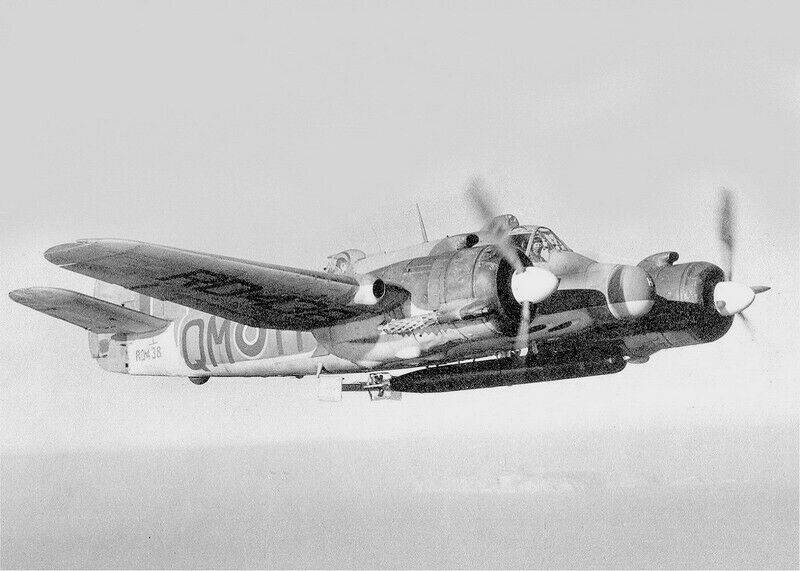
Bristol Beaufighter similar to ones operated by the Squadron
Crown Copyright
In January 1945 the squadron moved to Kumbhirgram, in the north east to begin ground-attack missions over Burma with rockets. Then in February the Mosquitos returned to commence operations on 1st March. Until the formal end of hostilities in August that year, low level attacks were made against enemy transport and bases in Burma. In November, a detachment was sent to Java where nationalist forces had begun attacking Allied troops who landed to disarm the Japanese. Ground-attack sorties against marauding bands and escort flights over road convoys occupied the detachment until the squadron disbanded on 21st March 1946.
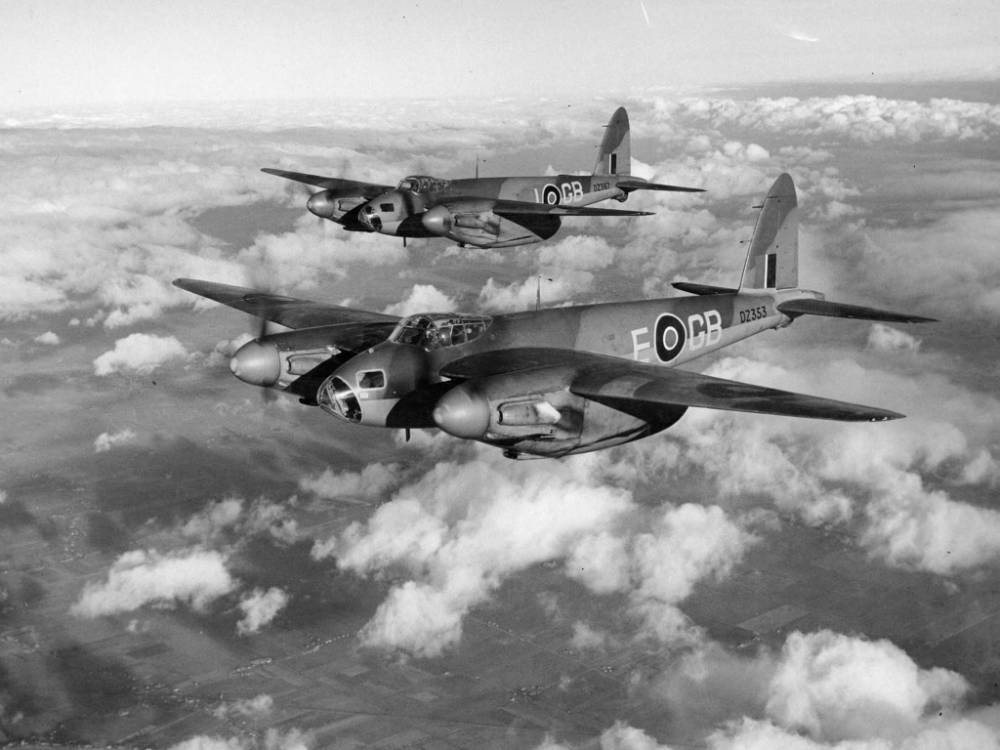
Mosquitos similar to ones operated by the Squadron
Crown Copyright
On 1st September 1946, 47 Squadron was re-formed at RAF Qastina in Palestine when 644 Squadron was renumbered, providing air transport with Halifax A7 and A9, converted bombers, relocating on October 1st to RAF Fairford in the Army support role.
The Squadron moved on 14th September 1948 to RAF Dishforth, becoming the first RAF Squadron to receive the Hastings transport aircraft.
It deployed to Schleswig Land on 1st November 1948, to support the Berlin Airlift. During the next 6 months it carried out 3,000 trips to Berlin with 22,000 tons of supplies, mainly coal. With the blockade ended, the Squadron returned to RAF Topcliffe on 22nd August 1949 operating in support of airborne forces and relocated to RAF Abingdon in May 1953.
In May 1956 the squadron became the first to re-equip with the Blackburn Beverley heavy-lift transport for Transport Command, supporting operations in Cyprus, Kuwait and East Africa and carrying out mercy flights related to floods, droughts and other natural disasters. As part of the major transport fleet modernisation the Beverley was retired, and the squadron again disbanded on 31st October 1967.
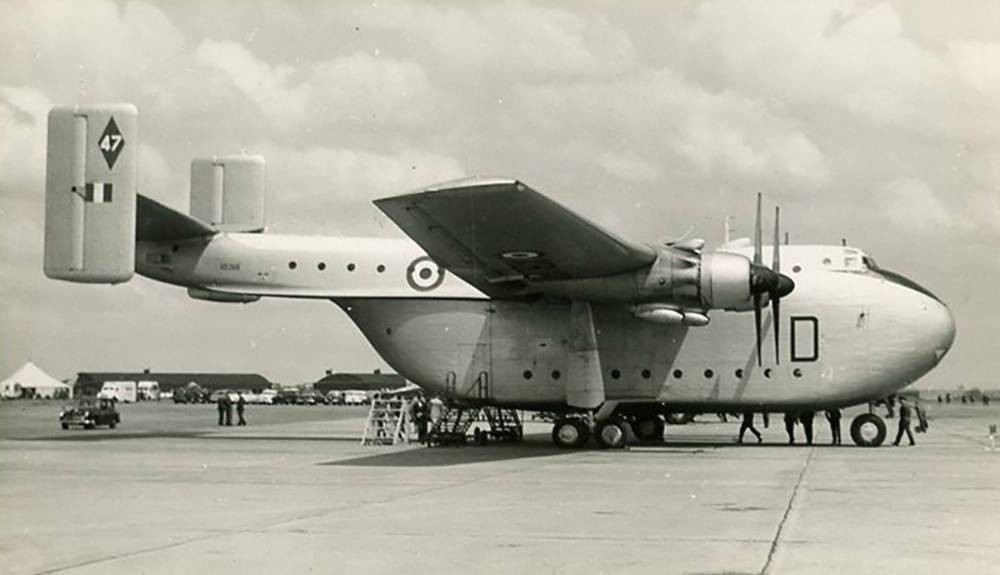
Blackburn Beverley C1
Image courtesy of R L Ward
47 Squadron re-formed at RAF Fairford on 25th February 1968 with Hercules C1, moving to RAF Lyneham in September 1971
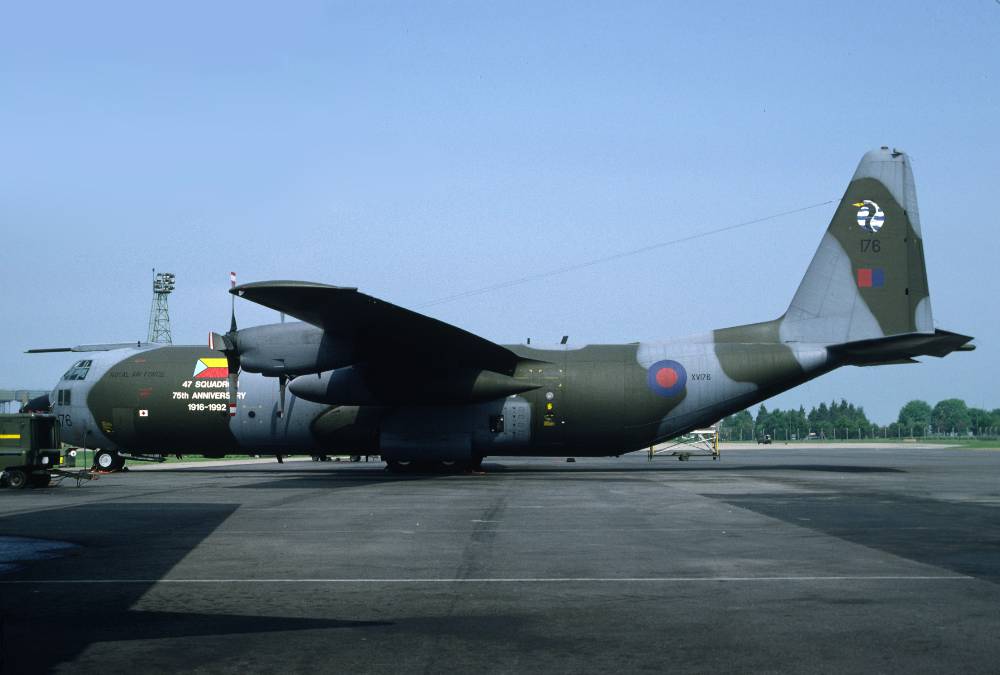
Hercules C-130K C.3P at RAF Lynham
Image courtesy of Adrian M Balch
During the Falklands war in 1982 the squadron airlifted supplies to Ascension Island and later parachuted men and supplies directly into the South Atlantic theatre of war. To enable the 4,000 mile trip from Ascension to the Falklands, several Hercules were given additional fuel tanks and fitted with refuelling probes.
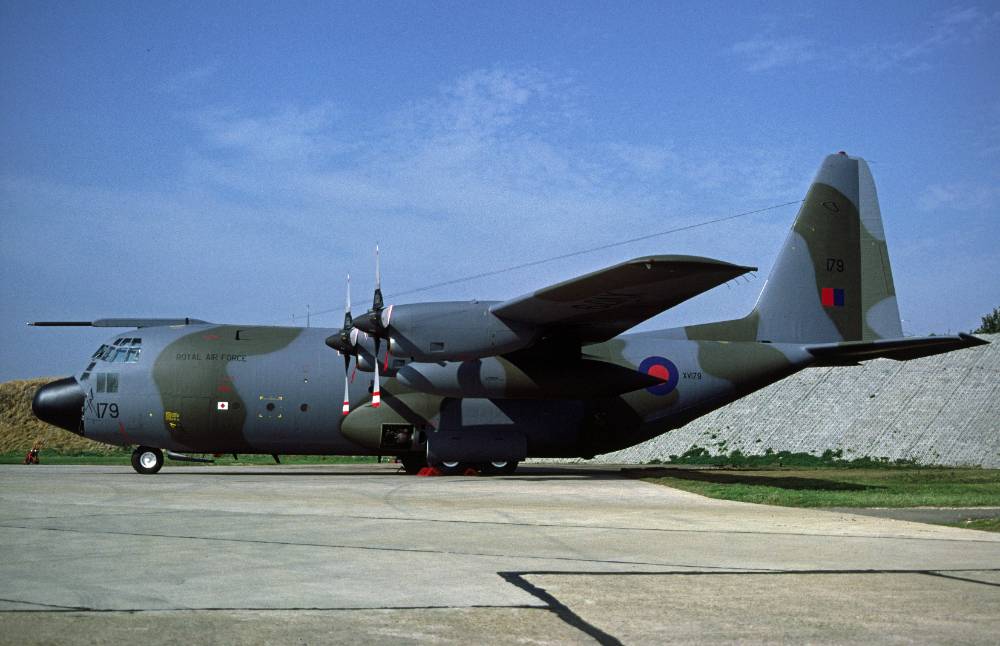
Hercules C-130K XV179 C.1
Image courtesy of Adrian M Balch
Since the 1970s Special Forces tactics equipment and operations have become much more sophisticated requiring specialist support from associated units. Following the Falklands War 47 Squadrons Special Forces Flight has provided dedicated long range clandestine transport capability for UK Special Forces with specially modified C 130s equipped with terrain following systems that enable extreme low flying in all-weather day and night, together with a comprehensive aircraft missile defence package for airlift and re-supply using specially selected and screened aircrew who train and work directly with Special Forces troops.
In 1999 the RAF began to receive the more advanced Hercules C.4 and C.5 but 47 Sqn continued to use the C.1 and C.3 until the type’s retirement.
The Squadron regularly deployed worldwide and has been involved in almost every RAF operation since including the Balkans, Rwanda, Afghanistan, Libya and Iraq. On 1 July 2011 47 Squadron relocated to RAF Brize Norton with the other Hercules Squadrons, to concentrate the RAF’s transport and tanker fleets at one base. In 2016 the squadron commemorated its 100th anniversary and one of its aircraft was given striking markings to mark the occasion.
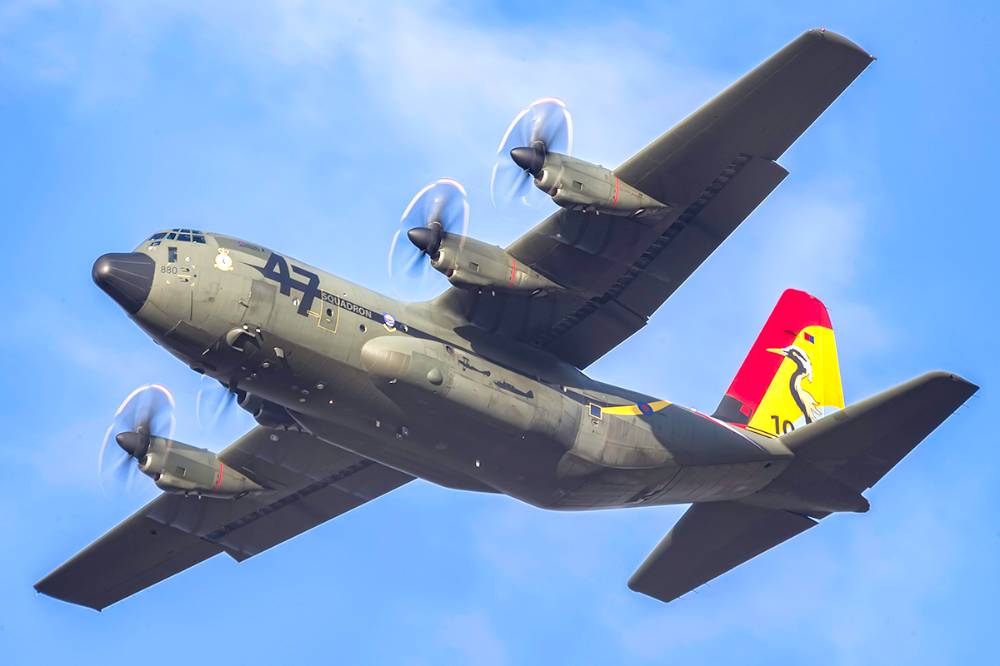
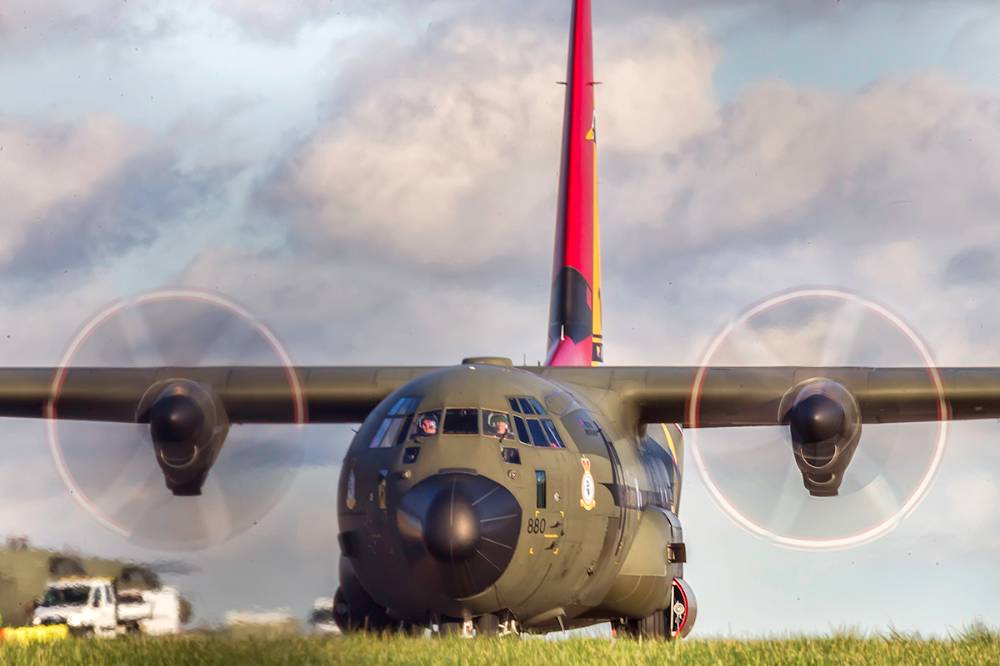
Hercules C-130J
Images courtesy of Martyn Bradley
The retirement of the Hercules C4/5 in June 2023 will see the disbandment of 47 Squadron, ending an impressive 55 years’ service with the Hercules, but until then it business as usual.
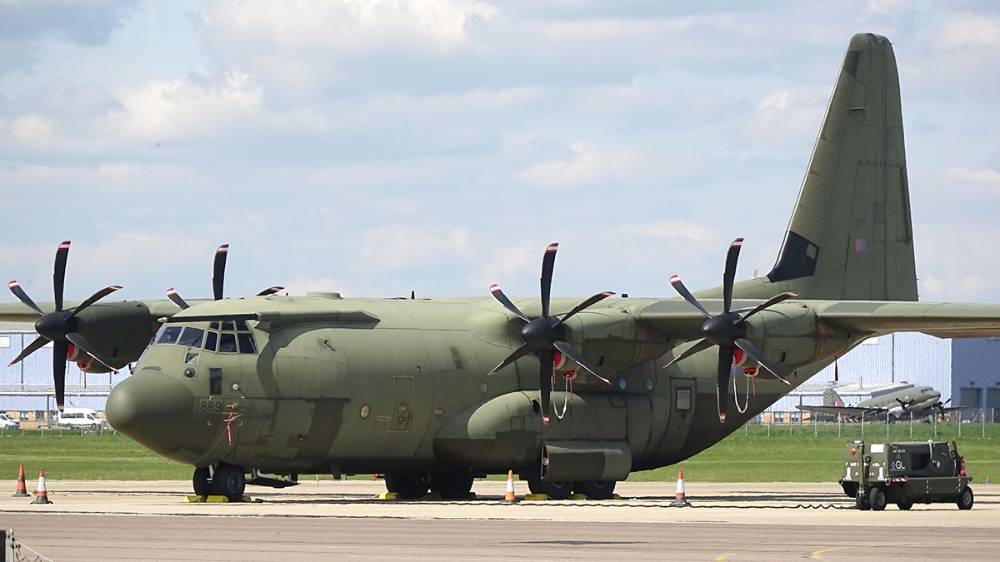
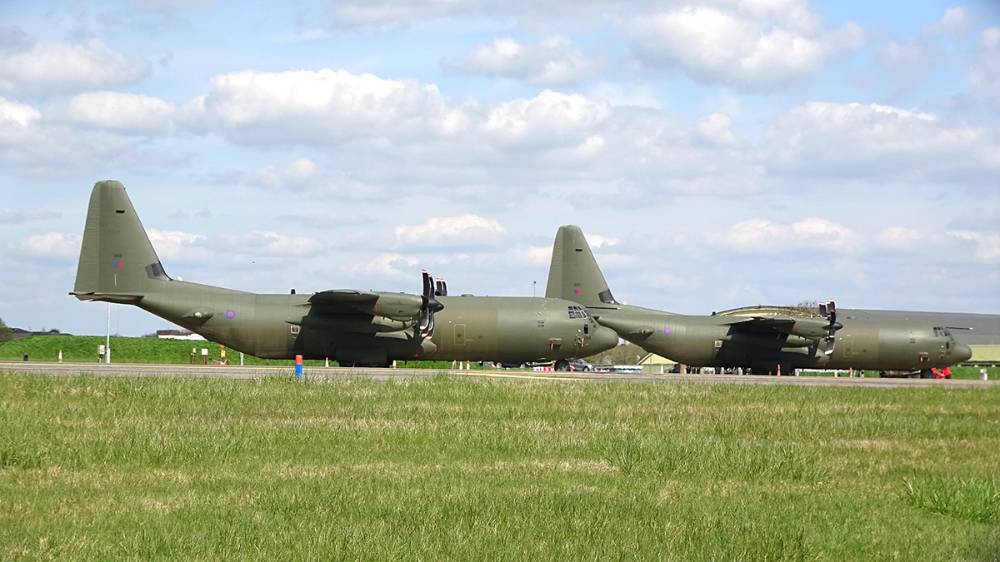
Images courtesy of James Feneley
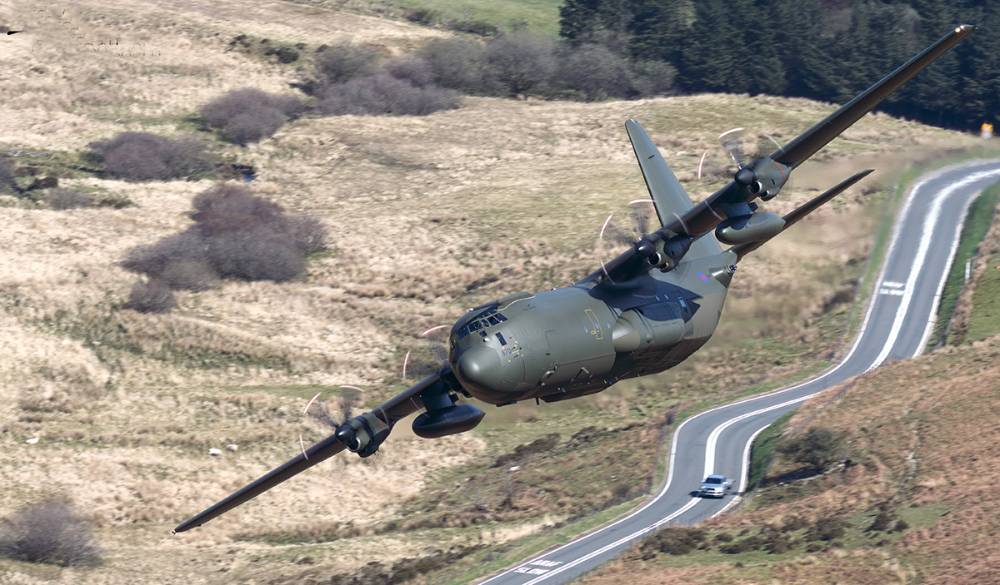
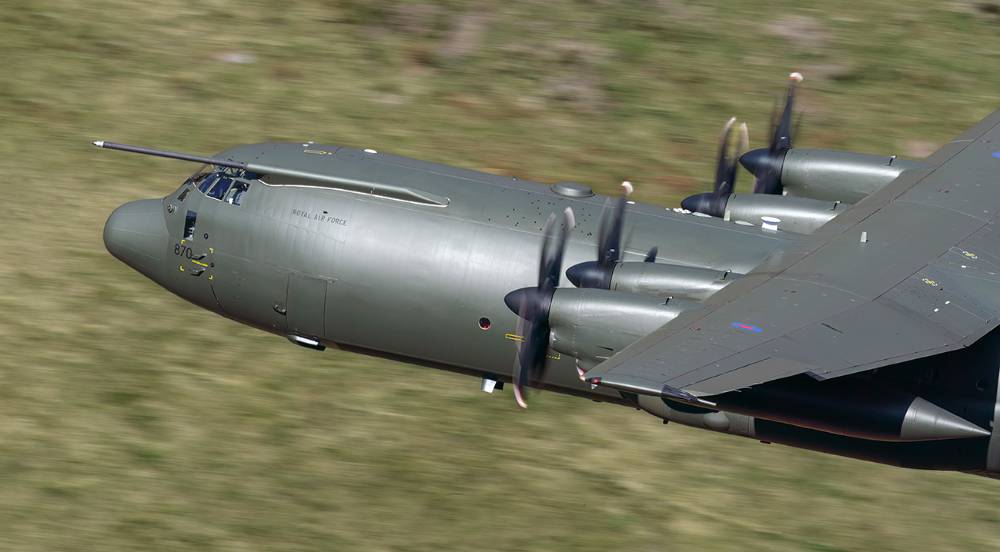
Images courtesy of Ian Tether
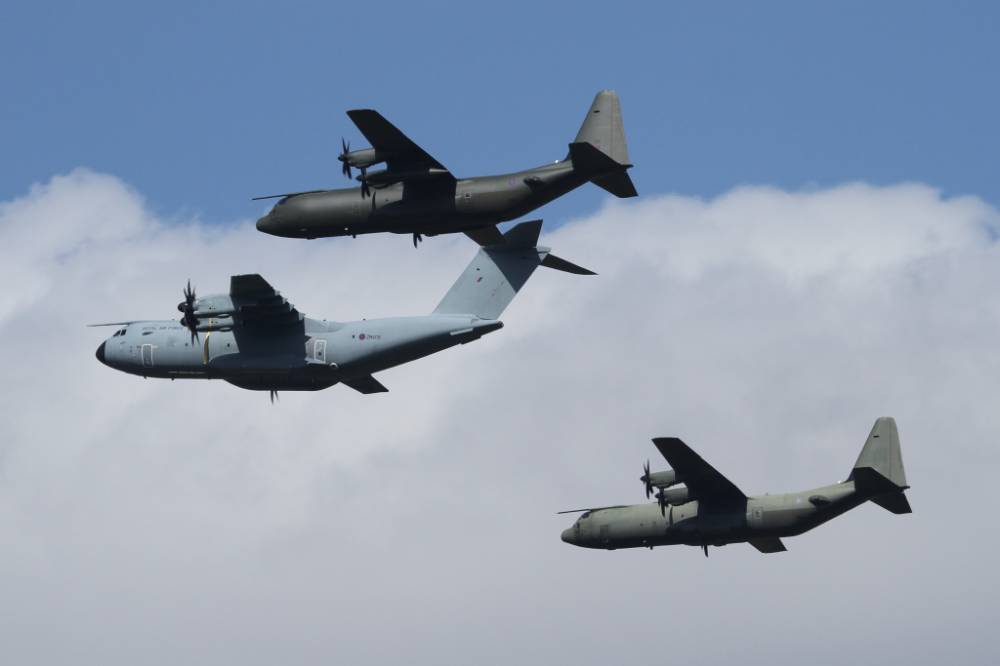
The Kings flypast practice with an A-400 25th April 2023
Image courtesy of Mark Rees
However, it is to be hoped that they may eventually join fellow RAF tactical transports squadrons 24, 30 and 70 in re-equipping with the A-400M Atlas in the future.
Abingdon Airshow - 20th May 2023
With just a few weeks to the out of service date, Hercules C-130J C5 ZH889 was a welcome visitor to Abingdon airshow on static display, this workhorse of the RAF will be sadly missed.
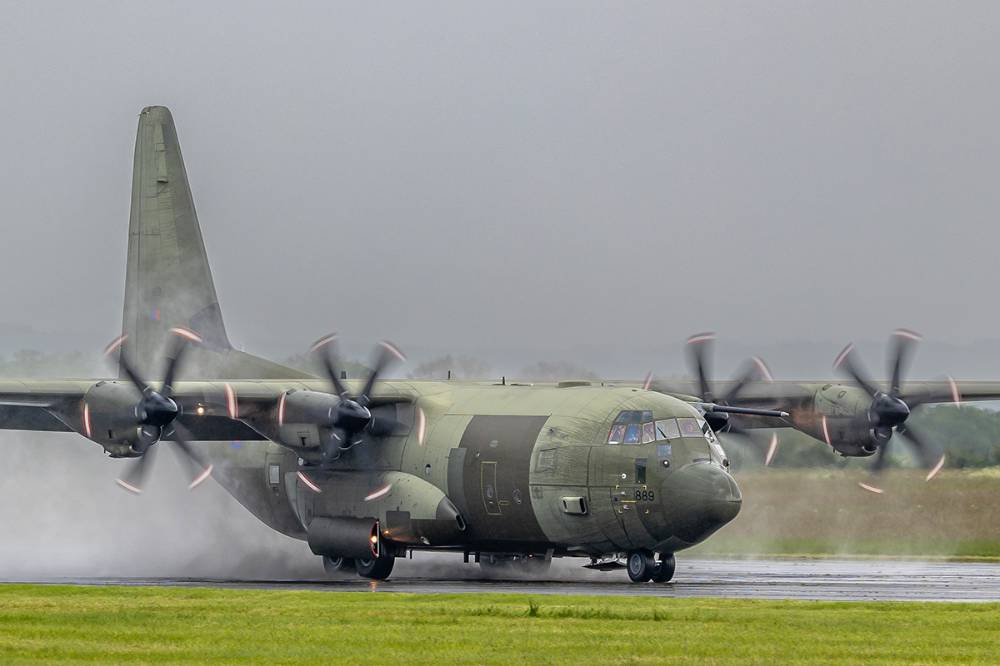
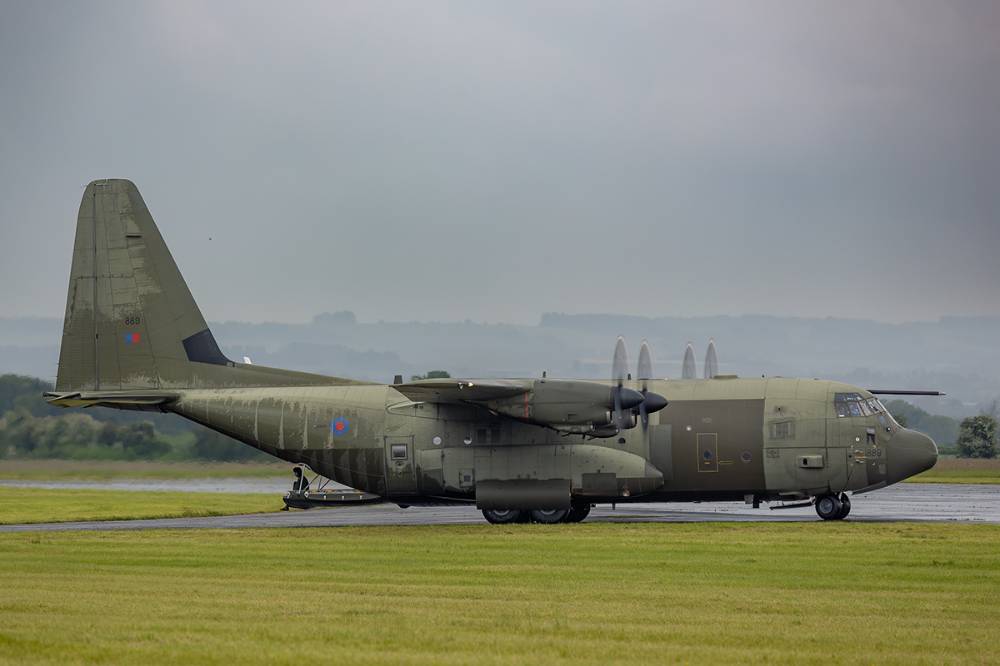
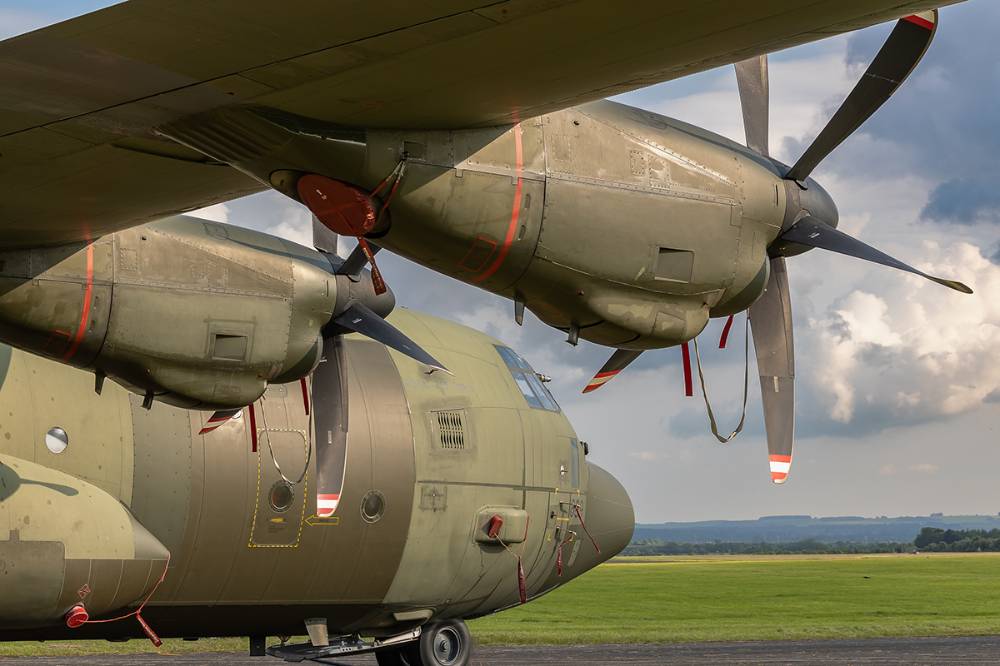
Images courtesy of Tim Liu
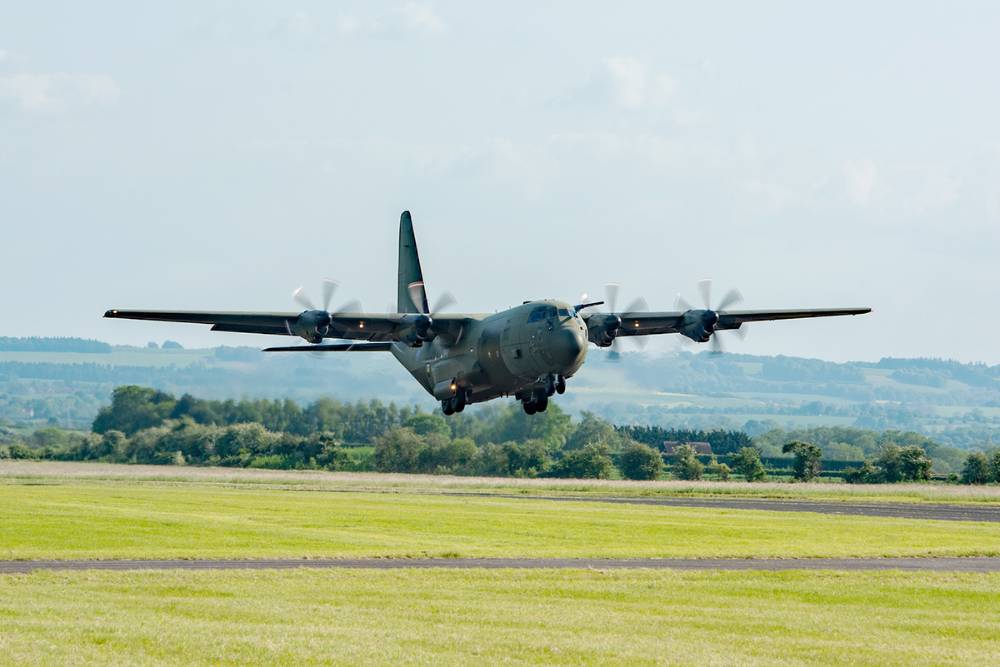
Image courtesy of Richard Hall
RAF Brize Norton - 27th May 2023
A special event was held at Brize Norton, Saturday 27th May, the event brought together around 300 aviation enthusiasts and photographers to say a final goodbye to a pair of 47 Sqn C130J C4 Hercules, which were ZH868 and ZH870. Also on show were other station assets.
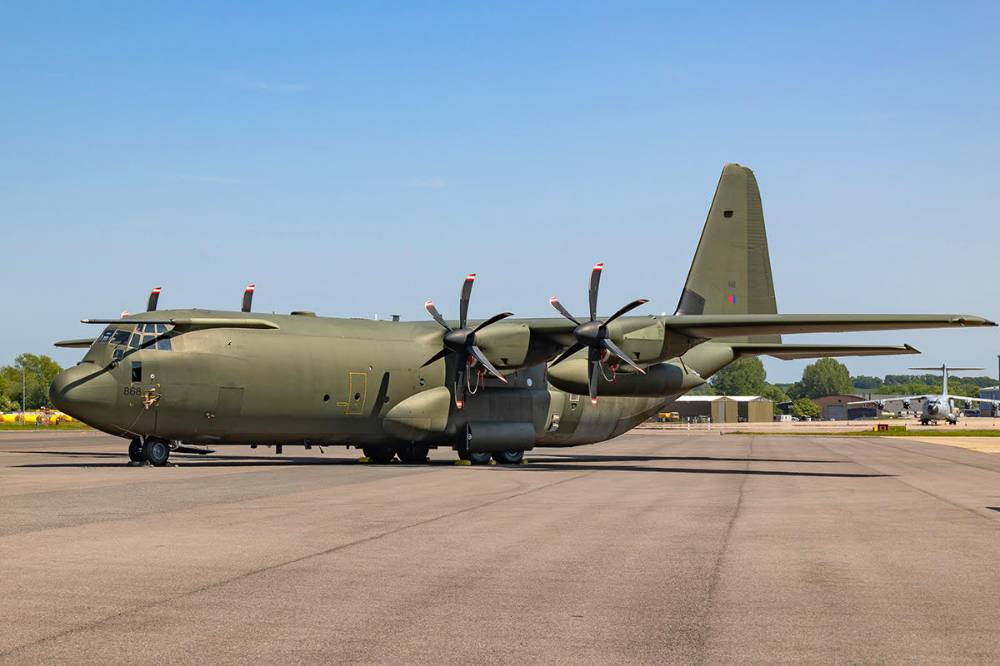
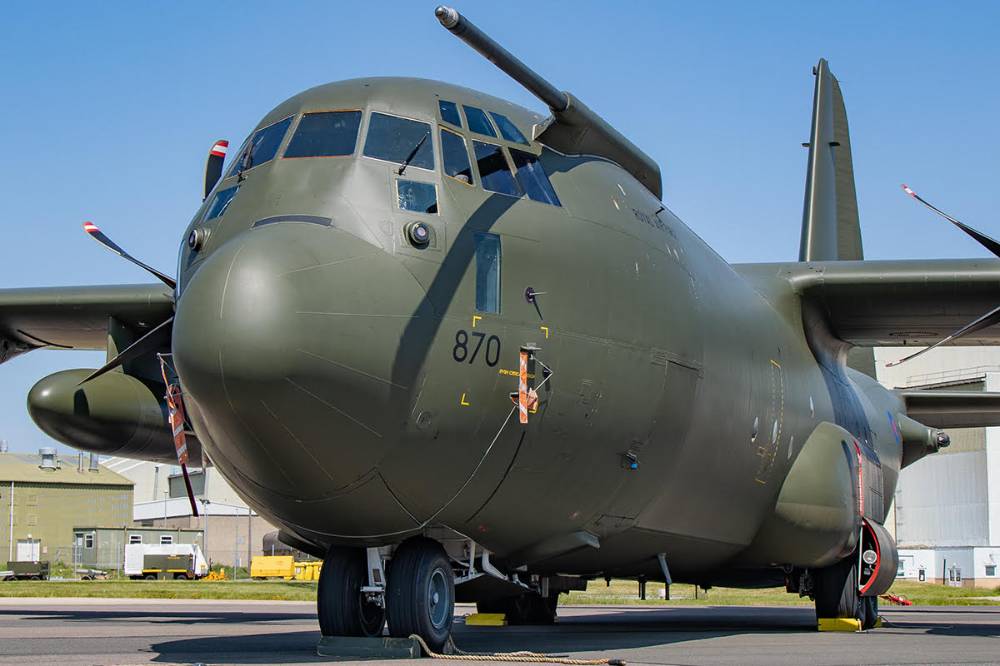
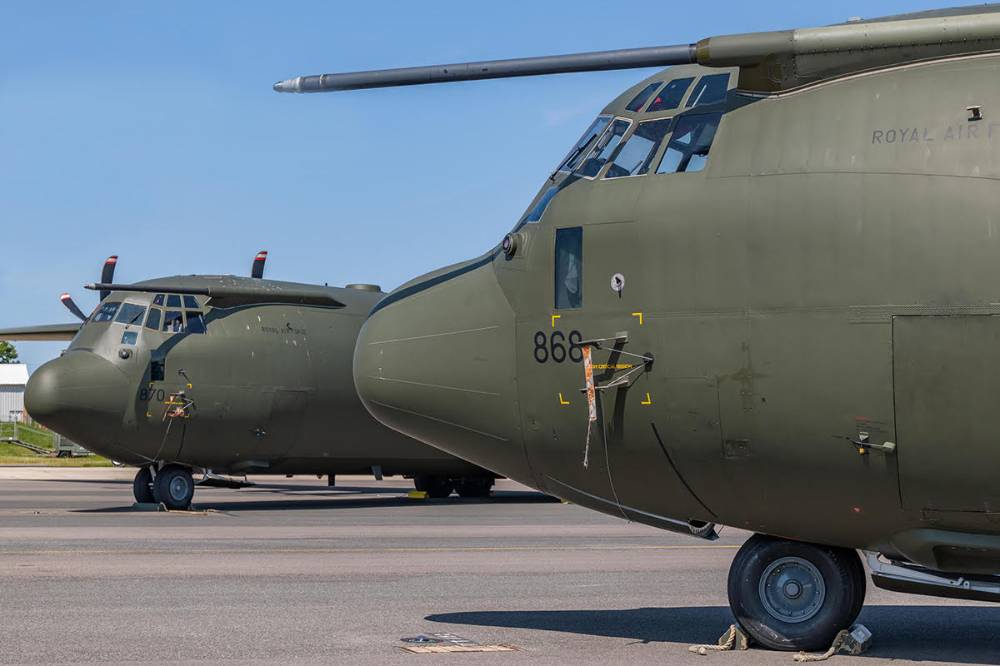
Images courtesy of Tim Liu
Hercules C-130J ZH867 C4 30th May 2023
Tuesday 30th May 2023 saw Hercules ZH867 C-130J low level over Ullswater in Cumbria.
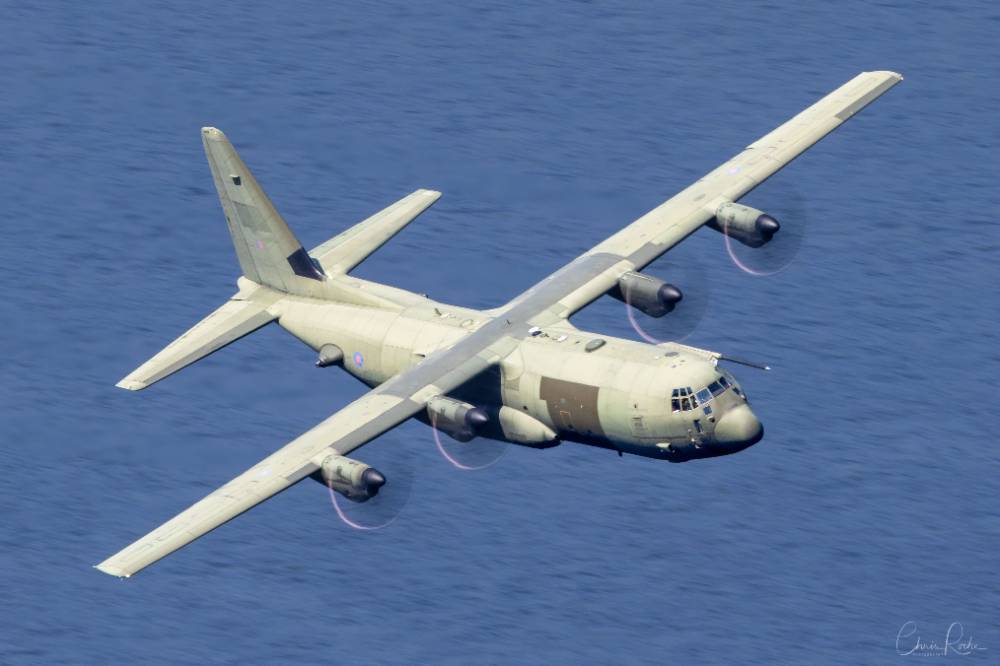
Image courtesy of Chris Roche